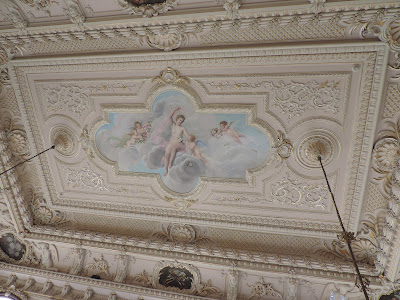Before
leaving Setubal this morning we walked around the downtown area stopping at
several churches.
 |
| Setubal Boulevard |
 |
| Setubal Jesus Convent |
 |
| Setubal St Julio Cathedral |
 |
| Tile Painting in the Cathedral |
Once on the road we
drove south, driving through areas where there are groves of cork oak
trees. Cork is actually the bark of the
tree. It is waterproof and heatproof. It
also is tasteless and odorless, thus a good product for corking wine.
Harvesting cork
is done by skilled people. If there is a slip of the knife causing the cut to
be too deep, it will kill the tree. Also
cork cannot be harvested more than every 9-10 years. It takes that long for the cork bark to re-grow. When the cork bark is removed there is a
layer of raw red undercoat until the new bark begins to reform. After the cork is removed, a number is
sprayed on the tree, telling everyone in which year it was harvested. Portugal is the world largest producer of cork,
turning out 30 million corks a day.
Since corks
for bottles are round, the remnants of the cork are used in many other
ways. It is usually ground and formed
into shapes for decorative items, but also Birkenstock Shoe Company uses it for
the soles of their shoes.
Cork trees
simply grow anywhere and everywhere – some in groves, but many simply spread
across the hillsides. Often cattle or
sheep are grazing under the trees.
 |
| Stork on its nest |
 |
| Cork tree harvested at least once - Notice the girdle line |
 |
| Harvested Cork |
As we
traveled farther south we began seeing olive trees, and the citrus groves. We
also saw fields of yellow flower and red poppies. It is springtime. Today was a beautiful day. While in the sun you did not want a jacket,
but if you were in the shade, the breeze was slightly chilly.
 |
| Olive Grove |
 |
| Orange Groves |
 |
| Picking Oranges |




















































No comments:
Post a Comment